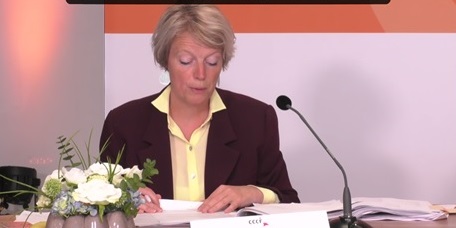

Order a call
 30.05.2022
30.05.2022
The following results were obtained in the framework of CCCF15:
ML for cadmium in cocoa powder (100% total cocoa solids on a dry matter basis) was adopted for 2 mg/kg after lengthy discussions. Kazakhstan purchases cocoa beans in the African countries, the content of cadmium there initially the soil is at low rate, and hence in grown cocoa beans too.
Next document CX/CF 22/15/7 "Maximum Levels of Lead for Certain Food Categories". The proposed MRLs for lead to revise it for eggs, culinary herbs, spices, sugars, syrups, honey, miscellaneous foods for infants and young children were found lower than the MRLs for lead established in TR CU 021-2011 “On food safety”. So, it is also necessary to initiate a review of the MRLs for lead taking into account the fact that the toxic effect of lead has a negative impact on IQ, the reproductive system, kidney function, leads to the development of hypertension, adverse pregnancy outcomes.
Document CX/CF 22/15/9 "Maximum levels for total aflatoxins in certain cereals and cereal-based products including foods for infants and young children and associated sampling plans". Kazakhstan took the position that the proposed MRLs are high and Kazakhstan cannot support them, with the exception of polished rice on the base of the position for protecting the health of consumers and taking into account the fact aflatoxins are recognized as carcinogens. The MRLs for total aflatoxin for infant and young children foods are of particular concern, as children are the most susceptible group among all consumers.
The MLs for total aflatoxins in flour, meal, semolina and flakes derived from maize were set at 10 µg/kg at the CCCF15 session. Kazakhstan, the European Union and Egypt have taken reservations on this item.
The Committee reviewed the ML for total aflatoxin in husked rice of 20 µg/kg. Kazakhstan and Singapore noted that husked rice is healthier than polished rice and it is recommended by doctors and nutritionists. However, the CCCF Chairman approved the MRL for total aflatoxin 20 µg /kg with a revision after 5 years. The reservation was expressed by Kazakhstan, the European Union, Egypt, Singapore, Kenya, Sudan.
ML for total aflatoxin of 5 µg/kg for polished rice didn’t raise discussion and was approved at the proposed level. But India took the reservation by proposing an ML of 8 µg/kg.
In Kazakhstan sorghum grain, destined for further processing is used as an additive in feed for farm animals. The ML for total aflatoxin for sorghum for further processing was supported by all countries of 10 µg/kg after discussions.
The setting of MLs for total aflatoxin for cereal-based foods for infants and young children was the most controversial item. Arguments were made for and against the proposed MRL of 5 µg/kg. Kazakhstan took the position that children are the most vulnerable group of the population for toxic and carcinogenic aflatoxins (B1, B2, G1, G2) and, according to national legislation, their content in children's products is not allowed (less than 0.15 µg/kg). That’s why Kazakhstan cannot support the proposed ML. Other countries have taken a similar position. At the end of the discussion, Kazakhstan, EU, the United Kingdom, the Russian Federation, Egypt, Uganda, Iran, Singapore, Kenya expressed a reservation to the summarized proposal of the ML for the total aflatoxin at 5 µg/kg with a further revision in 5 years.
The issue of setting ML for total aflatoxin in ready-to-eat peanuts and associated sampling plans was suspected in 2018 as no consensus was reached. However, ready-to-eat peanut is important in international trade and with India and China being the main exporters. Kazakhstan took the position that aflatoxins are recognized as carcinogens, and aflatoxin B1, often found in peanuts, is the most toxic of them. The cost of peanuts in Kazakhstan is lower compared to other tree nuts, so they are consumed more often and in more quantity. Moreover, the proposed ML is higher than this indicator of the Technical Regulations in force in the country. In addition, the tables presented by the electronic working group with new data revealed that the application of the Code of Practice for the Prevention and Reduction of Aflatoxins in Peanuts significantly reduced the amount of aflatoxins in peanuts. In this regard, Kazakhstan cannot support the proposed ML for the total aflatoxins in ready-to-eat peanuts.
The CCCF Chairman decided to set ML for total aflatoxin at 10 µg/kg after lengthy and hot discussions. The reservation was expressed by Kazakhstan, the European Union, Singapore and Egypt. Further, the Committee decided to return the work on establishing the ML and the associated sampling plan to revise for consideration by CCCF16.
The full version of the CCCF15 report can be found here